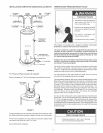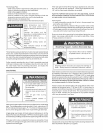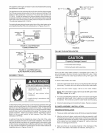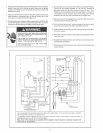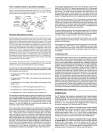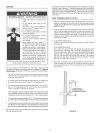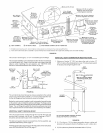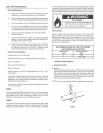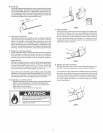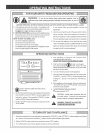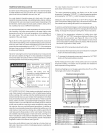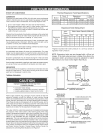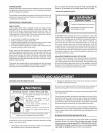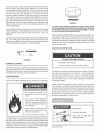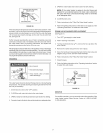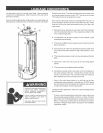
B.Deburring
Useaknife,plasticpipedeburnngtool,orfiletoremoveburrsfromtheend
ofsmalldiameterpipe.Besuretoremoveallburrsfromaroundtheinside
aswellastheoutsideofthepipe.Aslightchamfer(bevel)ofaboutIO°-
15°shouldbeaddedtotheendtopermiteasierinsertionofthepipeinto
theendofthefitting.Failuretochamfertheedgeofthepipemayremove
cementfromthefittingsocket,causingthejointtoleak.
1(
STEP B
C. Test dry fit of the joint
Tapered fitting sockets are designed so that an interfaced fit should
occur when the pipe is inserted about 1/3 to 2/3 of the way into the
socket. Occasionally, when pipe fitting dimensions are at the
tolerance extremes, it will be poseible to fully insert dry pipe to the
bottom of the fitting socket. When this happens, a sufficient quantity
of cement must be applied to the joint to fill the gap between the pipe
and fitting. The gap must be filled to obtain a strong, leakofreeioint.
D. Inspection, cleaning, priming
Visually inspect the inside of the pipe and fitting sockets and remove
all dirt, grease or moisture with a clean dry rag. If wiping fails to
clean the surfaces, a chemical cleaner must be used. Check for
possible damage such as splits or cracks and replace if necessary.
Depthoofoentry
Marking the depth of entry is a way to check if the pipehas reached
the bottom of the fitting socket in Step R Measure the fitting depth
and mark this distance on the pipe O.D. You may want to add
several inches to the distance and make a second mark as the
primer and cement will most likely destroy your first one.
Apply primer to the surface of the pipe and fitting socket with a natural
bristle brush. This process softens and prepares the PVC or CPMC for
the solvent cementing step. Move quickly and without hesitation to the
cementing procedure while the surfaces are still wet with primer.
E, Application of solvent cement
. Apply the selvent cement evenly and quickly around the outside ofthe
pipe at awidth a little greater than the depth of the fitting socket.
. Apply a light coat of cement evenly around the inside of the
fitting socket. Avoid puddling.
• Apply a second coat of cement to the pipe end.
Cons of cement and primer should beclosed at all
times when not in use to prevent evaporation of
chemicals and hardening of cement.
They are also very flammable and should be kept
away from heat or flame.
R Joint assembmy
STEPE
Working quickly, insert the pipe into the fitting socket bottom and
give the pipe or fitting a 1/4 turn to evenly distribute the cement. Do
not continue to rotate the pipe after it has hit the bottom of the fitting
socket. A good joint will have sufficient cement to make a bead all
the way around the outside of the fitting hub. The fitting will have a
tendency to slide back while the cement is still wet so hold the ioint
together for about 15 seconds.
G,
f,
STEPF
Cleanup and joint movement
Remove all excess cement from around the pipe and fitting with a
dry cotton rag. This must be done while the cement isstill soft.
The ioint should not be disturbed immediately after the cementing
procedure, and sufficient time should be allowed for proper curing
of the joint. Exact drying time is difficult to predict because itdepends
on variables such as temperature, humidity and cement integrity.
For more specific information, you should contact your solvent
cement manufacturer.
STEPG
21



